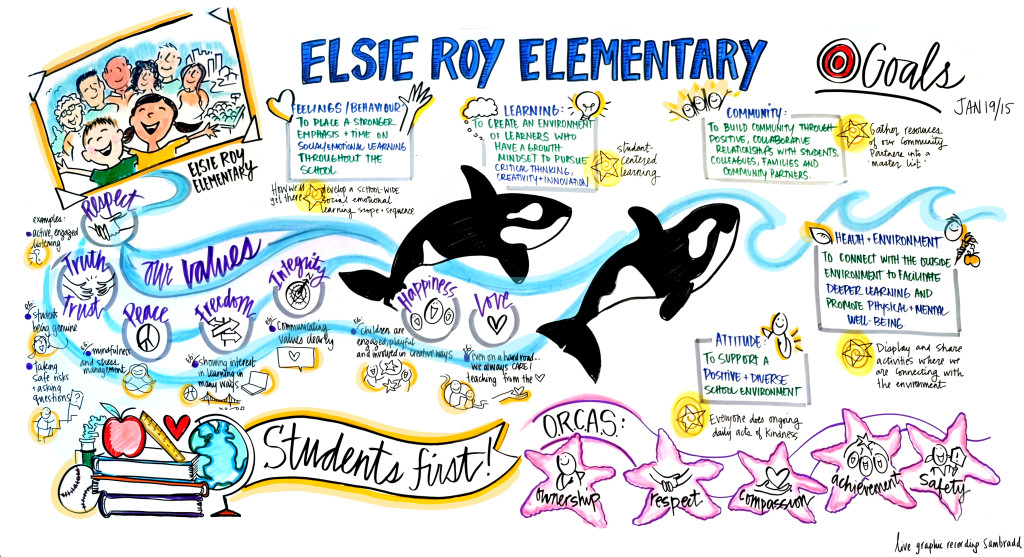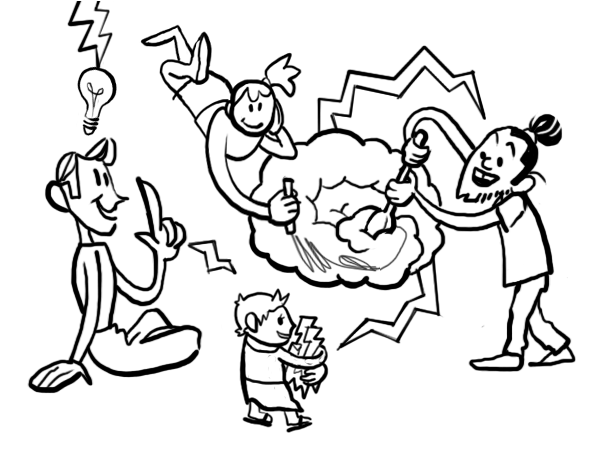Putting it Together
It’s time to take your initial ideas and put them all together! At the design brainstorm phase, you will want to include information from your goals and constraints, take into account the knowledge you gained from know your school, and incorporate concepts from the get inspired phase. In addition, you will want to take into account all of the information gleaned from the surveys that have been returned.
What are the major activities for learning and play that will take place? Will there be a garden? An outdoor classroom? Painted games? A place to sit? What core values do you want to incorporate?
Now is a great time to hold workshops with students and community members. We recommend two workshops – one for students, and one for community members. The workshop for students should have plenty of creative ways for children to express their design ideas. Some of the best ideas come from young minds, and these students will make up the majority of the school ground users.
Helpful Hints for Workshops
Whether you’re calling it a workshop or a design charrette, the goal is to have the input of stakeholders before you move on to the next phase of the project. This can be the mechanism that starts the discussion and communication process with the broader community, beyond your established team. This is critical since students and the community are important end-users of the project, and any design needs to take their needs into consideration. A successful workshop will consider three key steps: the lead up and organization, the day of implementation of the workshop, and how to best use the products of the workshop going forward.
As you begin organizing your charrette, you should do the following:
- Establish goals for the charrette as a team. What specific things would you like to achieve by holding this workshop?
- Ensure that the issues to be discussed in the charrette are well-defined
- Determine the length of the workshop
- Organize resources and volunteers to run the event
- Designate a chairperson (or two) who will introduce the project and facilitate the workshop
- Decide on a room or space to hold the workshop in that has access to a projector or whiteboard, and plenty of space for tables and chairs
- Depending on your budget, you may want to consider a graphic recorder or facilitator – someone who can turn words into images before your eyes. This is a great way to bridge the gap for people who may not be as comfortable drawing themselves.

Live graphic recording for Elsie Roy Elementary by Sam Bradd (drawingchange.com)
The day of the charette:
- Arrive early to set up tables and organize the room in a way that will facilitate communication
- Place drawing and writing supplies on each table
- Provide a clear verbal introduction to the workshop, with the aid of a visual presentation
- For the community member workshop, consider providing food and coffee/tea as a thank-you for participating (and to keep energy levels up!)
- Document any models or drawings produced through photographs (this is especially important for keeping a record of what students produce)
After the charette:
- Organize notes and photographs to incorporate into the Design Scope Document

Children make models during a design workshop for SFU UniverCity Childcare (Image: space2place design inc.)
